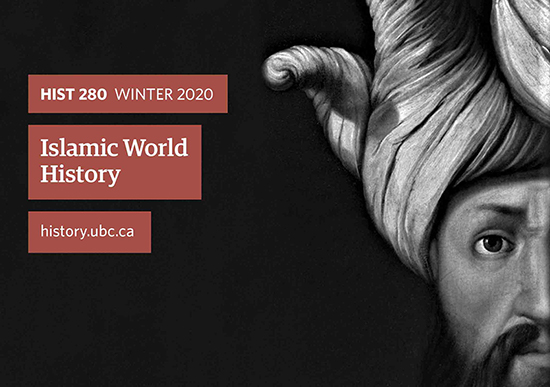

In anticipation of the Fall semester, Sebastian Prange answers a short Q&A on his upcoming course HIST280: Islamic World History.
Can you explain the image and its significance? Why did you choose it?
SP: The image is of Salāh al-Dīn Yūsuf ibn Ayyūb (1137-93), who is known in the West as Saladin. He is one of the most famous heroes in Muslim history for leading the fight against the Christian Crusaders and capturing back Jerusalem. He was also a rather successful ruler of Egypt, where he founded the Ayyubid dynasty. Putting this iconic image on the course poster speaks to one of the core aims of the course: to explore key events and figures in the history of the Muslim world, from the time of the prophet Muhammad to our own.
How does it relate to the course and course material?
SP: The image relates to the aims of the course in another way, too. We study the history of the Muslim world, but we also ask what world history in general looks like from the perspective of the Muslim world. The Crusades, and the figure of Saladin in particular, are a good example of how events that have been portrayed in a certain way in Western historiography look completely different, and hold very different meanings, from the vantage point of the Muslim world. So in this course, we not only study the past, but we also want to ask how different people have understood and made sense of that past – acknowledging these different narratives can go a long way towards understanding present-day misunderstandings and conflicts.


